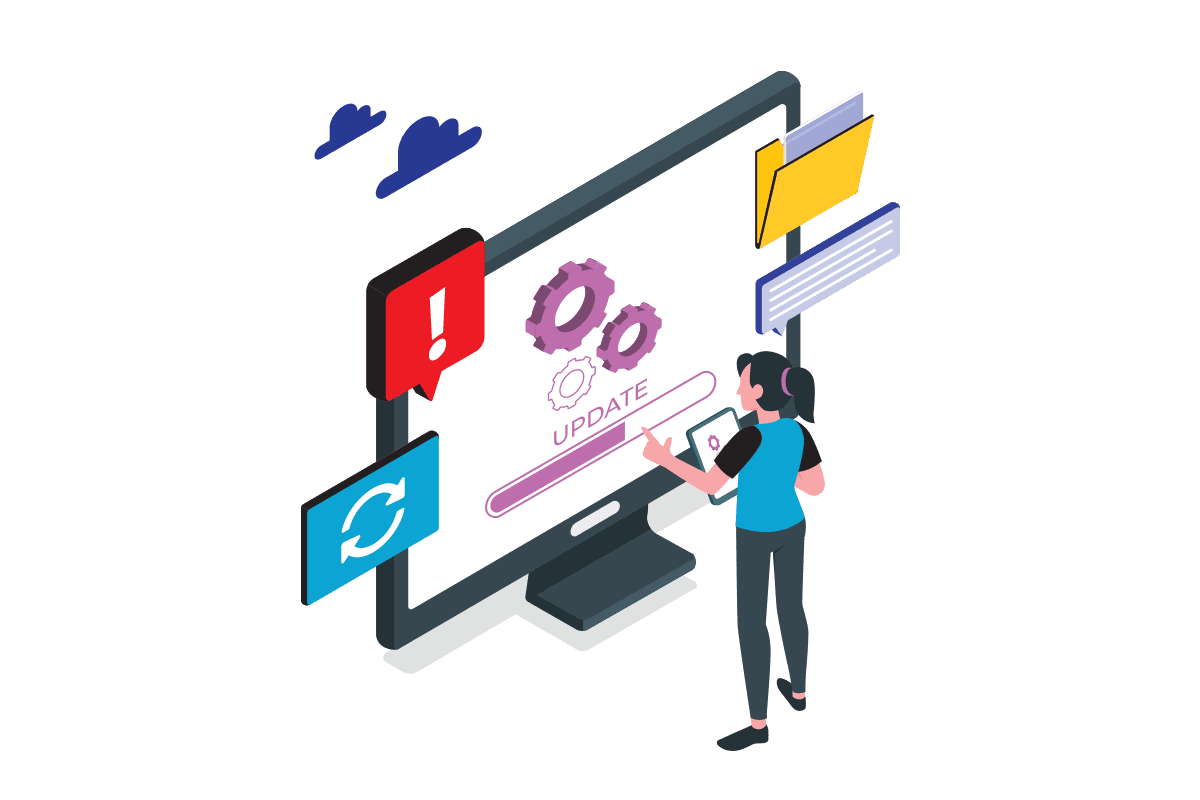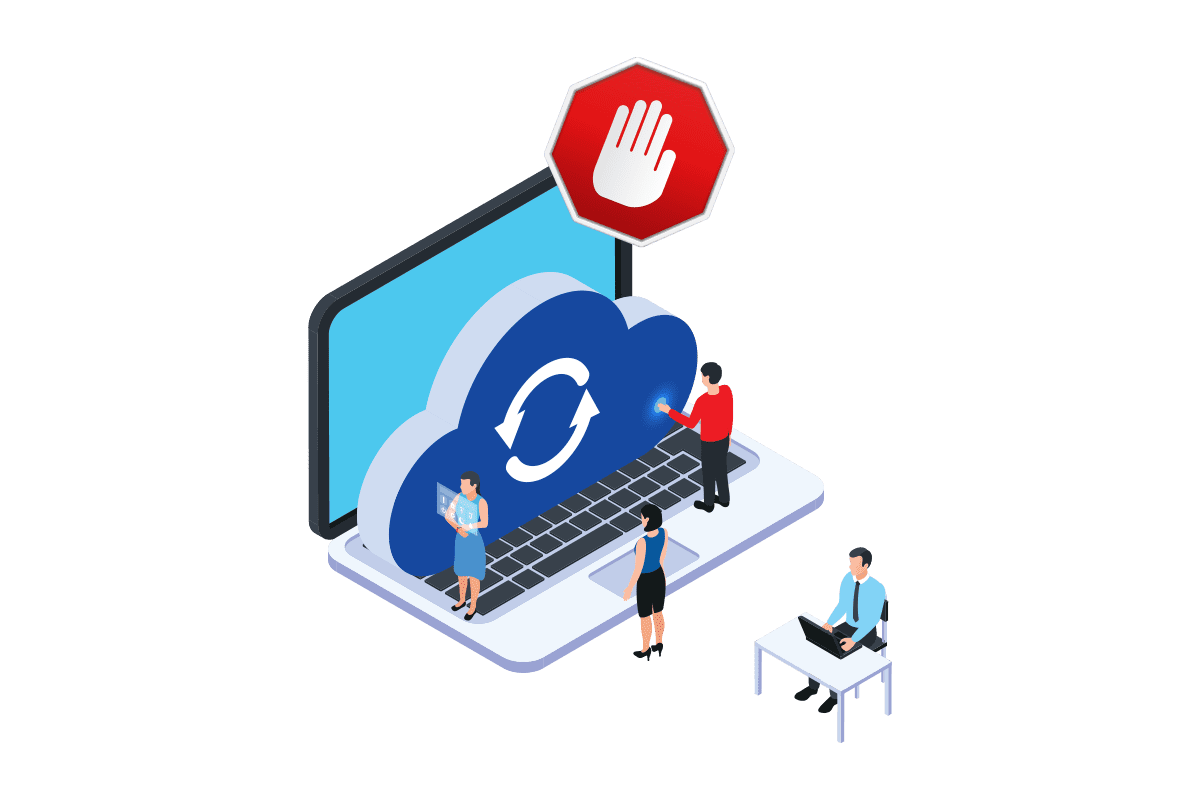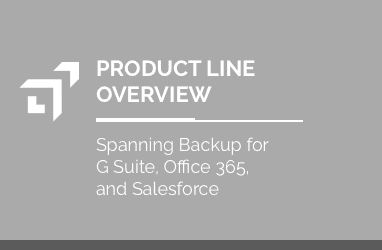Request a demo to learn more about protecting your SaaS data.
Cloud-to-Cloud Backup & Restore
Comprehensive data protection. Simple recovery. Built in trust and transparency. Work in the cloud with confidence.
Choose Google Workspace, Microsoft 365, or Salesforce for product details.
FLEXspend for Spanning Backup
While your IT needs may change, data protection remains a necessity. FLEXspend for Spanning
Backup protects your backup investment while ensuring agility to meet ever-evolving business
requirements. Now, you can seamlessly replace any unneeded Spanning Backup solution(s) with
another Spanning Backup or Unitrends solution that matches your organization’s needs.
See all reviews:
• Google Workspace Marketplace
• Office 365 Backup Reviews
• Salesforce AppExchange
Spanning Innovation Spotlight
As a Kaseya company, Spanning is committed to delivering innovative features and functionality, designed to significantly enhance our customers' service delivery quality and workflow efficiency. Take a peek at some of our latest new features:
One Plan, every feature
Priced 30% lower than other competitive options.
Volume pricing available. Get unlimited retention of all your data.
No tiers, just the best Spanning has to offer:
Unlimited retention
Smart admin tools
Detailed reporting
See Google Workspace, Microsoft 365, and Salesforce product details for the full features list.
Product Line Overview
Learn about our backup and recovery solutions for Google Workspace, Office 365 and Salesforce, and why Spanning Backup is the right choice to protect your business.
10 Reasons You Need SaaS Data Protection
Protect your business-critical data from loss and stay compliant in the cloud with the industry’s most reliable SaaS data protection solutions.
What is Spanning Backup?
See why our customers are embracing the cloud without fear of data loss and what makes Spanning an industry leader in SaaS data protection.
The following are frequently asked questions about Cloud Backup and SaaS (Software as a Service) Backup:
What is cloud backup?
Cloud backup (also referred to as online backup or remote backup) is a form of data backup that entails backing up an entity’s data to a remote, cloud-based server. In the event that data should become unavailable for any number of reasons, it can then be restored from the cloud backup. When this backup is being performed on SaaS application data, the process is also known as Cloud-to-cloud backup (C2C backup).
How does cloud backup work?
Cloud backup works via structured copying of data into a separate or third-party hosted cloud-based server. Generally, this is accomplished by first installing cloud backup software into an IT environment and then establishing a cadence whereby an updated copy of your data is created and stored on behalf of the cloud backup provider. In most cases, these backups occur autonomously and frequently so that maximum data protection is ensured.
What is the difference between cloud storage and cloud backup?
Cloud storage and cloud backup are often mistaken as synonymous terms. While related, they actually serve different purposes:
- Cloud storage refers to the housing of data in a cloud-based environment as an alternative to physical or local storage. Often this serves to allow various users within an organization to access and share data from remote locations in real time.
- Cloud backup refers to the strategic use of cloud storage as a means of housing backed up (copied) data. Therefore, cloud storage is used to accomplish cloud backup.
What is SaaS backup?
SaaS backup is a specific type of data backup which refers to the systematic copying and/or archiving of an entity’s SaaS application data. This process is performed as a precautionary measure so that SaaS application data can be easily recovered in the unfortunate case of a data loss event. Spanning currently offers SaaS backup for Google Workspace, Microsoft 365, and Salesforce.
Why do we need to back up data?
A backup & recovery solution is key to ensuring the safety of your sensitive data. Every day organizations are at risk of losing data from a variety of incidents — malware attacks, programmatic errors, malicious insiders and, most commonly, simple human error — just to name a few. Even though SaaS application vendors will provide you protection from error on their end, it is ultimately your responsibility to safeguard against yourself and your end users.
What are the benefits of backing up data?
The most important (and obvious) benefit of employing a backup and recovery solution is the ability to quickly and easily restore your organization’s critical data in the wake of a data loss incident. However, backup and recovery solutions also offer many ancillary benefits such as ensuring business continuity, simplifying the on- and off-boarding of new employees, affording granular and point-in-time data restore options, and meeting compliance standards, amongst many others.
Learn more about the necessity and benefits of a backup and recovery solution.
What is a backup strategy?
A backup strategy is best be defined as an administrator’s plan to ensure critical organizational data is backed up and available for restore in the case of a data loss event. Often this serves as an integral component of a business continuity plan and entails:
- Determining what data must be backed up and protected
- Defining key elements associated with the Recovery Point Objective (RPO) & Recovery Time Objective (RTO)
- Identifying and implementing an ideal backup and recovery solution
- Monitoring ongoing backup activity and user provisioning as necessary
How often should you back up data?
The frequency with which you back up your data should be aligned with your organization’s Recovery Point Objective (RPO), which is defined as the maximum allowable period between the time of data loss and the last useful backup of a known good state. Thus, the more often your data is backed up, the more likely you are to comply with your stated RPO. As a good rule of thumb, backups should be performed at least once every 24 hours to meet acceptable standards of most organizations.
What are the 3 types of backups?
Although lesser-known, newer types of backup have been introduced in recent years, the three main types of data backup are traditionally referred to as full, differential and incremental. While each has its pros and cons, the principle underlying each is fairly intuitive:
- Full backups involve creating a backup copy of an entire data set, regardless of any previous backups or circumstances.
- Differential backups are accomplished by copying only data that has been added or altered since the previous full backup.
- Incremental backups are similar to differential backups in that unaltered data is not copied. However, instead of going back to the previous full backup, only additions and alterations since the most recent incremental backup are copied.
What is the difference between online and offline backup?
Backup is generally classified in one of two ways: online, or offline. Exact definitions of each may vary, but the main differences between them are simple:
- Offline backup refers to data backup that is stored on-site and in a tangible state. Often this involves the use of external hard drives, USB drives or the like. For this reason, offline backup is also known as physical or local backup.
- Online backup refers to data backup that is stored off-site in a cloud storage environment. It is accomplished via internet connection and without the use of hardware. As such, online backup is also known as remote or cloud backup.
What is the difference between hot and cold backup?
The terms hot and cold backup are used to express the state a database is in while a backup is taking place:
- Hot backup occurs when backup is performed on data that is actively online and available for access and editing by end users. The lack of downtime required to perform hot backups make it a favorable option for larger, multi-user organizations.
- Cold backup takes place when backup is performed on data that has been temporarily taken offline and protected from alteration. The absence of editing during cold backup provides greater quality control by minimizing incongruencies between the data and backup.









